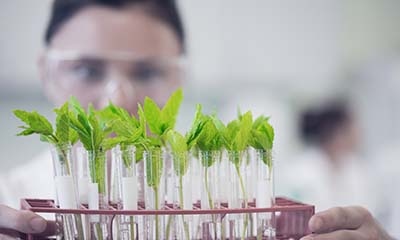
Agriculture is cyclical and despite the downward trend that started in 2014 and is expected to continue until at least 2017, there’s still plenty of optimism about food and agriculture over the long-term. However, it’s important from a policy standpoint that legislators get some things in line to help U.S. agricultural producers meet the challenge of producing more food in the next 40 years than the last 10,000 years combined.

Research dollars are needed to meet growing food demand. (Photo: Wavebreakmedia Ltd/Thinkstock)
This was the main message from Randy Russell, president and partner in the agricultural and food consulting firm of The Russell Group to the Senate agriculture appropriations subcommittee during a hearing on the state of the farm economy. The roundtable discussion featured top economists from agricultural groups as well as top economists from across the country and USDA chief economist Robert Johansson.
The world’s population is projected to grow to as many as 9.3 billion people by 2050, with 80% of those people living in developing countries. But how does the U.S. farmer weather the current down cycle to still help meet and capture profits in the growing demand needs?
Russell said instituting a macroeconomic policy that fuels growth is essential. The difference between a 2% and 3% growth in GDP is $4 trillion to the economy. Job creation brings with it lower deficits and for agriculture leads to more demand.
He also said there is a need to have a more aggressive trade agenda. Although he would love to see a completed World Trade Organization (WTO) deal, the reality is the greater emphasis needs to be on regional and bilateral trade agreements. “That is the future of our growth,” he said. These opportunities allow for the focus on non-tariff trade barriers such as phytosanitary barriers that currently limit exports of meat especially.
A more rational regulatory policy is key to the future success of farmers. Dale Moore, executive director of public policy at the American Farm Bureau Federation, shared that regulatory creep is a major issue facing farmers today. He said the pressure for farmers to make sure all those boxes are checked and ensure someone isn’t over their shoulder saying they’re out of compliance can be burdensome. “It’s not even the economic cost to comply with the regulation, but the time farmers and ranchers spend away from managing to being paper pushers,” Moore said.
Rusell added whether it is Department of Labor standards or the Environmental Protection Agency, the accumulation of the regulations and impact on farmers and agricultural supplier companies that serve them is essentially serving as a tax on them.
And the final need is to more effectively reinvest seed money – research dollars, Russell said. “If we’re going to meet global demand, we need to be reinvesting in the right way,” he said to the subcommittee. Some improvements have been made to make it more competitive in recent years and matched with private fund but investments in fundamental sciences will be crucial to meet future challenges.
Farm bill working
Another main message during the hearing was that the farm bill is working and should not be reopened prior to its expiration.
Tom Sell, cofounder and managing partner of Combest, Sell & Associates, shared that no one knows how long swells in agricultural downturns will last. What we do have as tools is the farm bill and can say it definitively is working, he testified. “I can say with confidence there will be farmers who will be in business in spring of 2016 because of the 2014 farm bill,” he said.
Collin Woodall, vice president of government affairs at the National Cattlemen’s Beef Association, added that the permanent disaster program kept many producers in business when the drought hit. The conservation programs – notably the Environmental Quality Incentives Program (EQIP) – have also been a farm bill policy that has benefited many livestock producers.
About the Author(s)
You May Also Like






